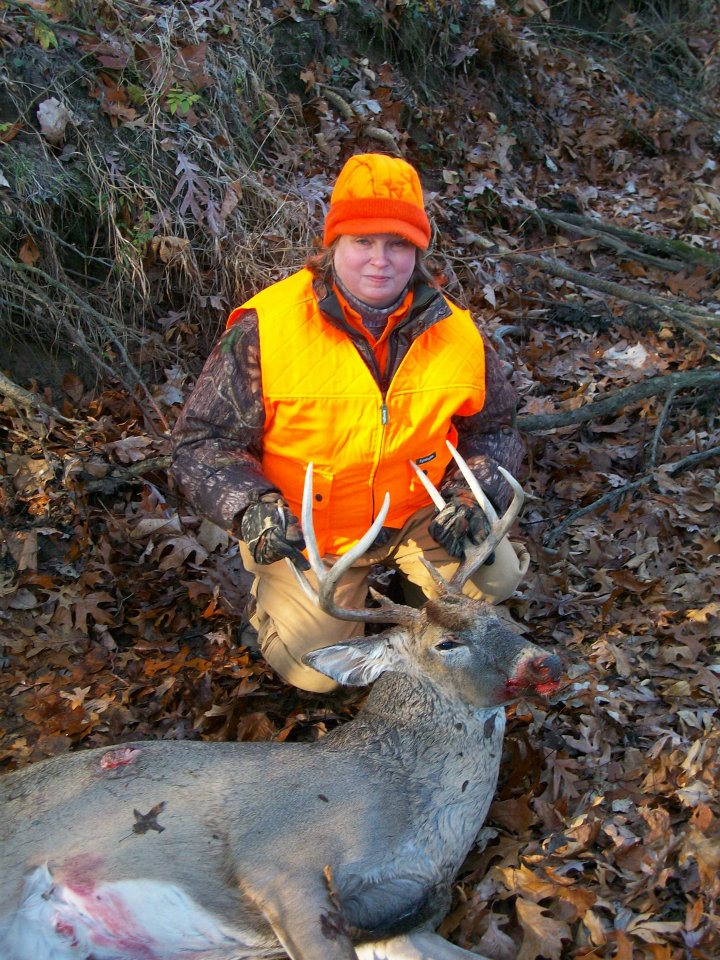When I first used a decoy I had no idea what I should do. My best thinking told me to place my decoy close to my stand and climb up a tree. The rut was in full swing and I stayed in my tree from dawn to dusk for the next two days. Unfortunately, the decoy did not produce a single shot opportunity. In fact, the decoy spooked every deer I saw. As much as I would like to take the blame off myself and put it on the decoy, I cannot. I will have to take all the credit, or lack of, for what the decoy did for me. I had the decoy placed in the thickest, nastiest part of the woods. I did not use scents to help attract deer to the decoy. Actually, I’m sure that the decoy was covered in human stink because I had been carrying it around with my bare hands, and never sprayed it down with a scent-eliminating spray.
Over the last 15 years I have used decoys with a lot of success. Through trial and error, along with advice from experienced decoy hunters, I feel confident every time I carry a decoy to the woods.
Using a decoy during the rut is not a sure-fire bet that you will tag a monster buck. But when used correctly, your chances will increase dramatically. Do not be afraid that using a decoy will scare deer. However, I have to warn you that does do spook on occasion at the sight of a doe decoy. But a buck decoy does not seem to bother a live buck as much.
When used properly, a decoy can bring a monster buck into range that you otherwise would never get a shot at. Below are ten more tips for using a decoy effectively.
1. The best time to use a decoy is during the pre-rut, when bucks are working their scrape lines and searching for available does.
2. Place a decoy in the wide open, such as in a food plot 20 to 25 yards from your stand. It’s possible for a decoy to startle an unsuspecting buck in thick cover.
3. Give a buck room. A buck will normally circle downwind of your decoy to scent check the area. A decoy that is 25 yards from your stand should allow enough room for the buck to pass between the deke and your stand, which should be downwind of the decoy.
4. Place a buck decoy facing your stand site. A buck will approach another buck from the front looking for a fight. You should get a good quartering away shot as he walks up to the fake.
5. Place a doe decoy facing away from you. A buck will approach a doe from the rear for obvious reasons. Again, a quartering away shot should present itself.
6. Keep your decoy free of human odors. Always wear rubber gloves, and spray the decoy with scent eliminating spray after you have it in place.
7. If a buck doesn’t see your decoy at first, try rattling or using a grunt call to get his attention.
8. When using a doe decoy, place a few drops of a doe in estrus scent on her rear end.
9. When using a buck decoy, place a few drops of a buck lure, like a tarsal gland smell, on his rear end.
10. If you have to choose between a buck and a doe decoy, choose a buck decoy. Bucks are only interested in sex for a very short part of the season, but they are always looking to size up another buck.
Watch how this decoy worked on this big whitetail. Make sure the volume is turned up so you can hear this big buck snort-wheeze as he works the decoy.



















![The Best Deer Camp Chili [VIDEO] Deer Chili Ingredients, Tomatoes, Chili Spices](/wp-content/uploads/2015/10/Deer-Chili-Deer-Camp-Recipe-218x150.jpg)
![How to Call Elk Early in the Season [VIDEO]](/wp-content/uploads/2016/08/byers003-218x150.jpg)




![Idiots Disturb Hunter: How Would You Have Handled It? [VIDEO]](/wp-content/uploads/2015/10/DSC00110-e1474487693878-100x70.jpg)
![Albino Buck Shocked to Shed His Antlers [VIDEO]](/wp-content/uploads/2015/10/AlbinoDeer-100x70.jpg)